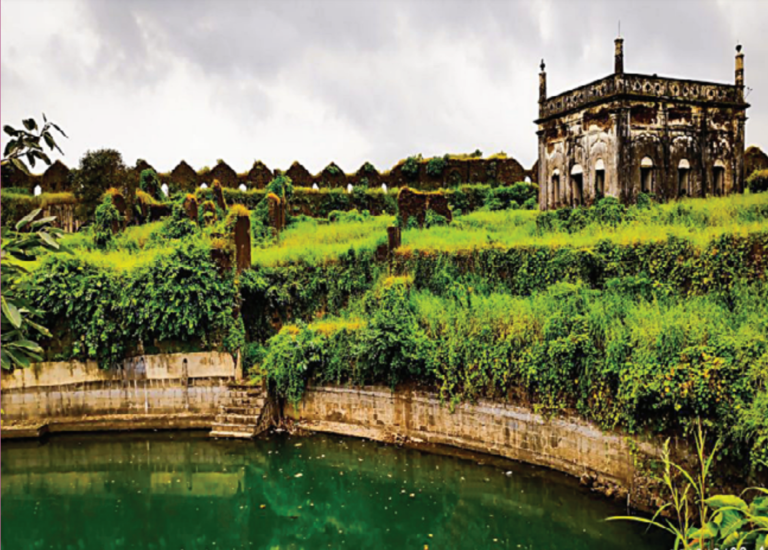A past steeped in history is not the only stake to Raigad’s claim to fame. It has many UNESCO heritage sites and is made proud by historic temples, exquisite landscapes and its rich flora and fauna. As a place that holds huge tourism potential, it has been a site for sore eyes with places like Elephanta Caves, Ashtavinayaka, Murud Janjira Fort, not to speak of its majestic seashore expanse. Visitors can soak in its mystique and partake of its traditional, signature dishes that give Raigad a distinct identity of its own.

Raigad is a district in the state of Maharashtra, India. It is located in the Konkan region, along the Arabian Sea coast and popular for its scintillating historical places, pristine beaches, picturesque landscapes and diverse flora and fauna of the Western Ghats.
Raigad is also home to a range of religious places, such as Ashtavinayak Temples, Elephanta Caves which are a UNESCO World Heritage Site and have cave temples dedicated to Lord Shiva, etc. These and more are testimonies to the zone’s rich history and cultural past.
Raigad has a great tourism potential, as it offers a variety of attractions and experiences for visitors. There’s something for everyone, whether it is history, culture, nature, adventure or spirituality. The zone can also be easily accessed from Mumbai and Pune by road or by ferry. It can also be explored in different seasons, as each season brings out a different aspect of its beauty.
One of the best-known places to visit, extremely popular among domestic and foreign tourists are the Elephanta Caves. They are located on Elephanta Island aka Gharapuri, in Raigad. While the island is home to three villages and 1,400 residents, it’s the caves that draw visitors from all over.
The Elephanta Caves have rock-cut stone sculpture scarved out of solid basalt rock. The most famous being Trimurti Sadashiva (three-faced Shiva). Many sculptures were damaged when Portuguese soldiers would use them for target practice.
Carved out of rock
Kondana Caves are a group of ancient Buddhist caves that are carved out of the rock at the base of Rajmachi Hill in Raigad. The caves date back to the 1st century BC and are among the oldest examples of rock-cut architecture in India. The caves are situated in a serene and scenic location, surrounded by lush greenery, waterfalls, and streams. The caves are also a popular destination for trekkers and nature lovers who come to enjoy the beauty and tranquility of the place. The Kondana Caves are located 33 km north off Lonavala and 16 km northwest off Karla Caves in a village called Kondana.
The caves consist of 16 chambers that are divided into two groups: Chaitya (prayer hall) and Vihara (monastery). The Chaitya group has one large cave that has a stupa (a dome-shaped structure that contains relics of Buddha) and a wooden facade that resembles a horseshoe. The facade has carvings of animals, humans, and floral motifs.

The Chaitya cave also has paintings on the ceiling and walls that depict the life and teachings of Buddha. The paintings are faded and damaged due to weathering and vandalism, but they still show the artistic skill and religious devotion of the ancient craftsmen.
The Vihara group has 15 caves that were used as living quarters and meditation rooms by the Buddhist monks. The Vihara caves have stone beds, benches, pillars, windows, and doorways that show the simplicity and austerity of the monastic life. The Vihara caves also have sculptures of Buddha and Bodhisattvas (enlightened beings who help others to attain enlightenment) in various poses and expressions. Some of the sculptures are damaged or missing, but they still convey the grace and serenity of the Buddhist philosophy.
Kondana Caves are a historical and cultural treasure that showcase the rich heritage and legacy of Buddhism in India. The caves are a testimony to the skill and dedication of the ancient artisans who created these magnificent structures with minimal tools and resources. The caves are a place that can transport anyone to a different era and a different state of mind.
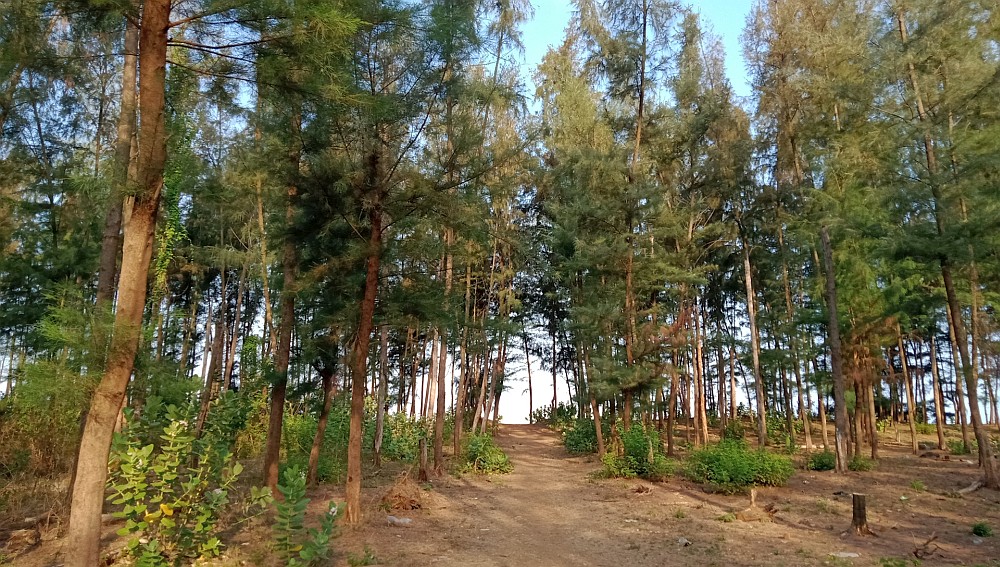
Dedicated to Ashtavinayaka
Shri Ballaleshwar Ashtavinayaka, a temple dedicated to Lord Ganesha, is located in Pali village, in Raigad. The temple is one of the eight temples that form the Ashtavinayaka circuit, which are the most sacred and revered temples of Ganesha in Maharashtra. Here, the idol is dressed like a Brahmin, a unique feature.
The temple is believed to be the only temple where Ganesha is worshipped by the name of the Lord`s devotee, Ballal. According to legend, Ballal was a young devotee of Ganesha who was tortured by his father for worshipping Ganesha. Ganesha was pleased by his devotion and appeared before him and healed his wounds. The elephant-headed God also granted him a boon that he would be known by his name in this temple. Hence, the temple is called Ballaleshwar, which means “the lord of Ballal”.
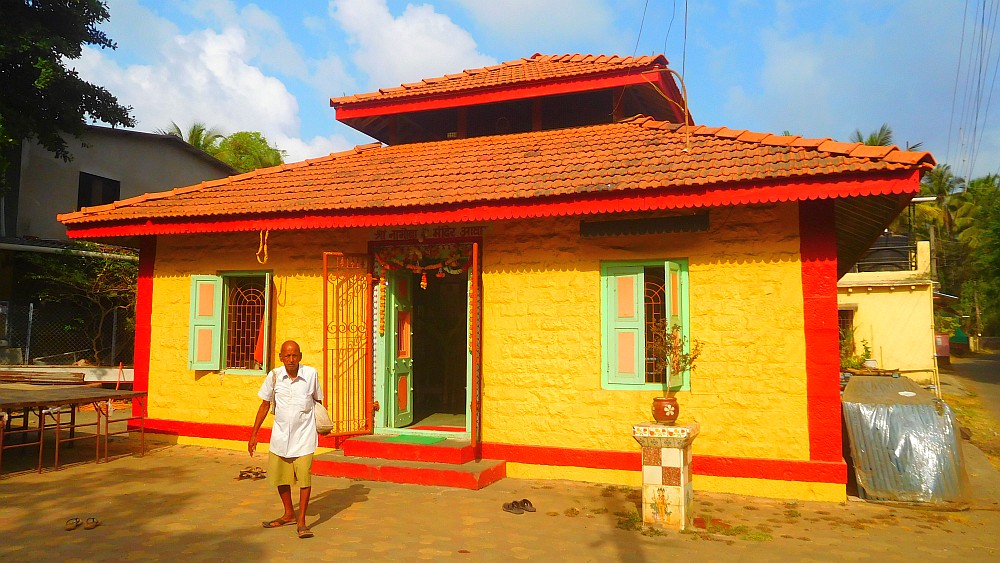
The temple has a beautiful wooden architecture that dates to several centuries old. The temple has a shikhara (spire) and has carvings of peacocks and elephants. It was designed and constructed east facing in such a manner that during sunrise, the first rays of the sun fall on the idol of Lord Ganesha.
The temple is also home to one of the famed bells that were brought back by the famous Peshwa Chimaji Appa after he defeated the Portuguese in Vasai and Sasti. The primary hall of the temple is twelve meters long and six meters wide. There are eight pillars, an inner sanctum, outer sanctum and the premises has two lakes.
The temple is visited by thousands of devotees throughout the year, especially during festivals such as Ganesh Chaturthi, Magh Chaturthi, and Bhadrapad Chaturthi. Devotees perform various rituals and ceremonies such as abhishek (bathing), aarti (prayer), prasad (offering), etc.
Shri Ballaleshwar Ashtavinayaka showcases the faith and devotion of the people towards Lord Ganesha. The temple is also a tribute to the rich history and culture of Maharashtra. It is a source of inspiration and blessings for those who visit it with an open mind and heart.
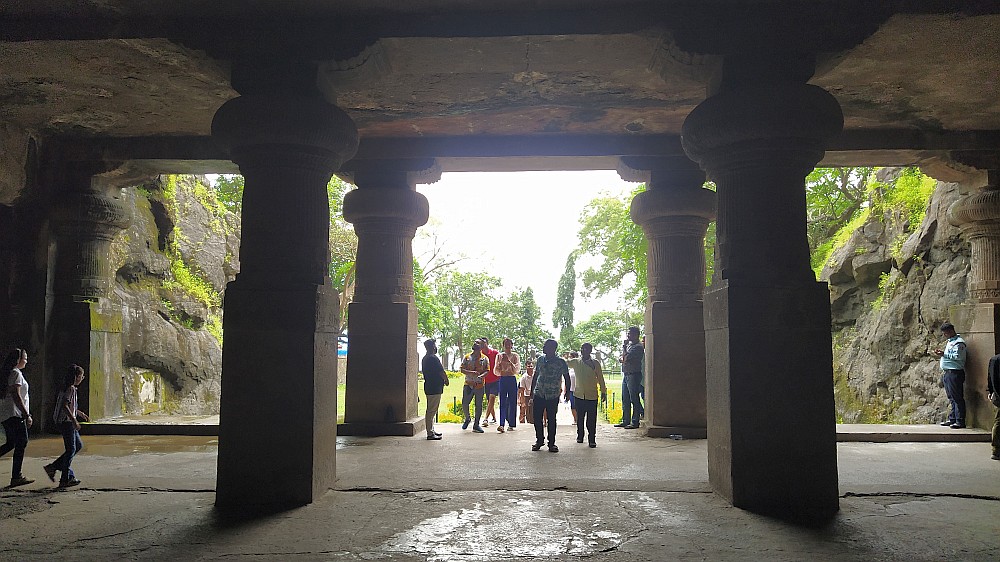
The perfect beach getaway
Varsoli Beach offers the perfect getaway for those who want to enjoy the beauty and tranquility of nature. The beach is located near Alibaug town, in Raigad district. It is one of the most beautiful and clean beaches in Raigad.
The beach has white sand and clear water that sparkle in the sunlight and is ideal for relaxing and enjoying the sea breeze, as it is not very crowded and noisy. The beach also offers various water sports activities, such as jet skiing, banana boat ride, parasailing, etc., for those who want to have some fun and adventure. It also has many coconut and casuarina trees that add to its charm and provide shade and shelter.
The beach is also a good place to witness the sunrise and sunset, as it offers a spectacular view of the horizon. It has a lighthouse that stands tall and proud on the shore. A few stalls and shops sell snacks, drinks, souvenirs, etc., for those looking to take home mementos.
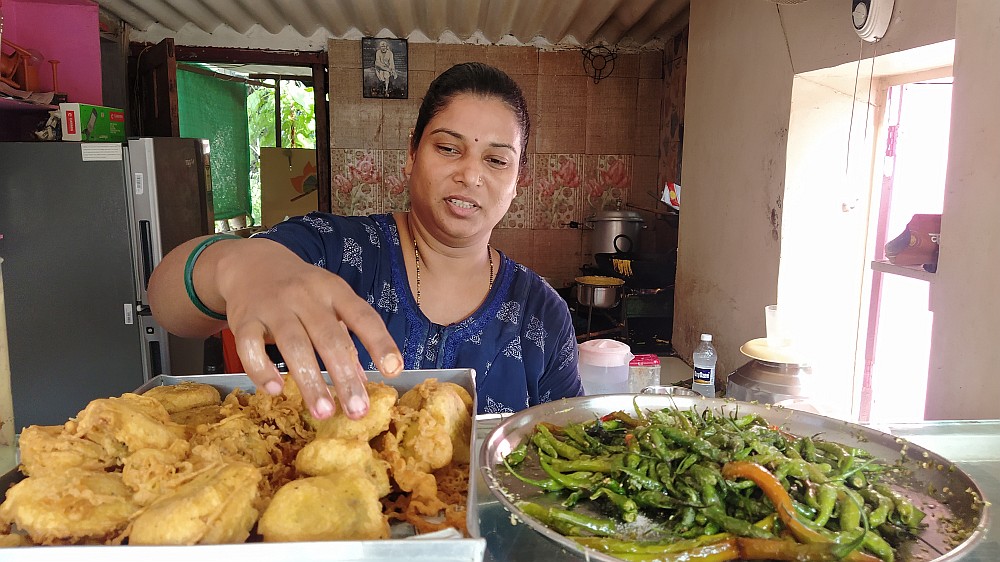
Apart from Varsoli, there are several other beaches in the zone. Many including Awas, Kihim, and Alibaug are frequented by tourists from Mumbai. While Awas offers the rare tranquil beach experience and is mostly visited by families, Kihim and Alibaug are more popular among those looking for fun and adventure sports on the beach.
Blessed by Lord Shiva
Harihareshwar Temple is a temple dedicated to Lord Shiva, who is also worshipped here as Harihareshwar or the lord of Hari (Vishnu) and Hara (Shiva). The temple is located on the shore of Harihareshwar beach, about 200 km from Mumbai, in Raigad and is considered to be one of the holiest places in Raigad, as it is believed to be blessed by Lord Shiva himself. It is also known as the Kashi of the South.
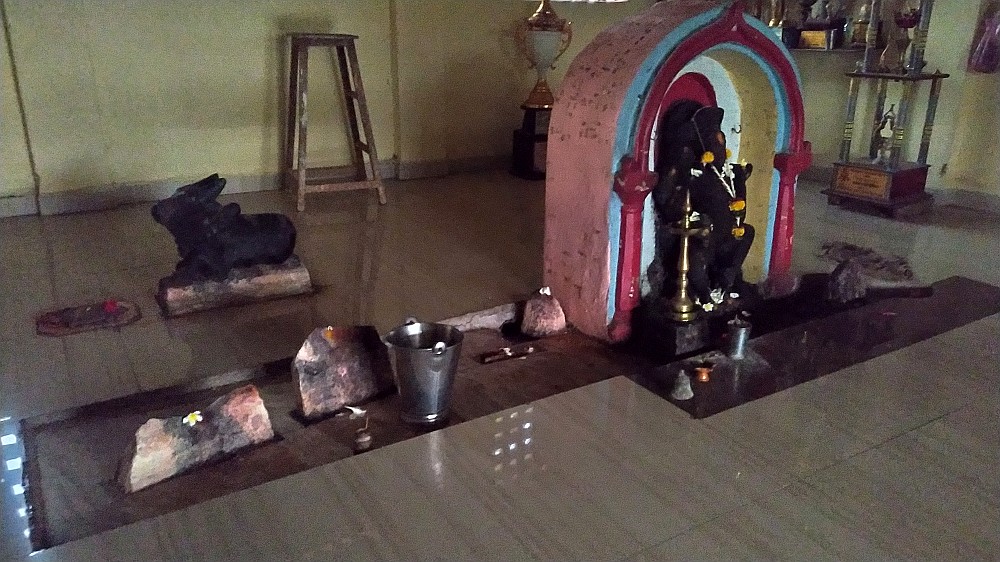
The temple has a history that dates back to the 16th century, when it was built by a local king named Harihar. Later renovated and expanded by the Peshwas, who were the prime ministers of the Maratha Empire. Shiva and Parvati in the form of ‘linga’ is the clan deity or kuladaivat of the Peshwas. In 1723, Bajirao Peshwa I renovated the temple after it was destroyed in a fire.
Harihareshwar Temple has a main shrine that houses a black stone idol of Lord Shiva. The idol is adorned with gold and silver ornaments and flowers and surrounded by other idols of Lord Vishnu, Brahma and Goddess Parvati in the form of a linga. The temple offers a beautiful view of the Arabian Sea and the Harihareshwar beach – one of the most pristine beaches in Raigad. Harihareshwar Temple is a place that showcases the faith and devotion of the people towards Lord Shiva.
Apart from the main temple, there are two more temples – Lord Kalbhairav (the idol faces North in this temple, as opposed to most others where it faces South) and Goddess Yogeshwari. As per tradition, one must visit and pay tribute first to Kalbhairav, then go to Lord Shiva and then again return to the Kalbhairav Temple.
Exotic architecture
Kanakeshwar Temple, dedicated to Lord Shiva – the supreme god of Hinduism – is an old temple located on a hill near the village of Mapgoan which is about 13 km from Alibaug. The temple is known for its architecture and the many steps that lead to the top of the hill. The steps were built by Govind Rangdas, the Diwan of Sardar Raghoji Angre.
The beautiful temple was constructed with the Hoysala style of architecture – the building style in Hindu temple architecture developed under the rule of the Hoysala Empire between the 11th and 14th centuries. The temple has a garbhagriha or the sanctum sanctorum and the sabhamandapa along with a water tank that is called the Pushkarni.
This temple is dedicated to Lord Shiva and most of the rituals are performed accordingly by members of the Gurav family. At the base of the hill, on the way up, there is Naropant Pradhan’s tomb, then Nagobacha Tappa, Devachi Payari and the Gaimandi which is the footprint of a cow on a cliff surrounded by five shivlinga.
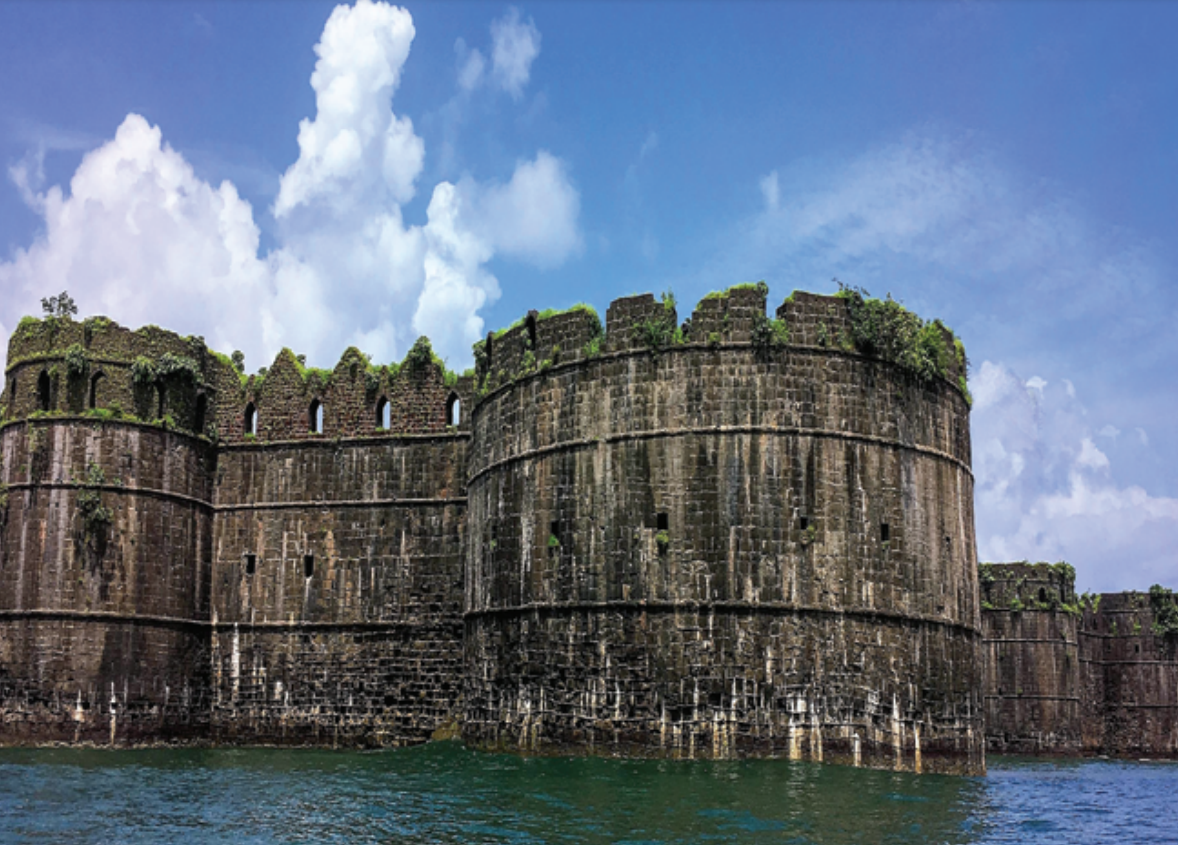
An engineering marvel
Murud Janjira Fort is an engineering and an architectural marvel that rightly is known as the sea fort. The fort is located on an island off the coast of Murud village, in the Raigad district of Maharashtra and is accessible by a boat that takes about 20 minutes from the shore.
Among other things the fort is known for its impressive record of being undefeated by any enemy. The fort has a hexagonal shape and is surrounded by high walls. The fort has several bastions that are equipped with cannons and guns. The fort also has three huge gates that face different directions: the main gate faces the land, the west gate faces the sea, and the east gate faces the open sea.
The fort also has a mosque, a palace and a tomb within its premises. The mosque, located near the main gate has a dome and minarets, was built by the Siddis as a symbol of their faith and devotion. The palace is located near the west gate and has two storeys and a courtyard. The palace was the residence of the Siddi rulers and their families. The tomb is located near the east gate and was the burial place of the Siddi rulers and their nobles.
Siddis or the Habshi, were originally from Africa and came to India as fighters, slaves, etc. centuries ago. They later ruled a significant portion of Maharashtra’s coastline and lived in Janjira, their capital. To limit their movement and overtures, the Marathas constructed several sea forts like Kanderi, Underi, Padmadurga, etc.
The fort also has many other attractions, such as water tanks, granaries, warehouses, prisons, etc., a secret passage that leads to the mainland, which was used as an escape route in case of emergency. The fort also has a lighthouse that stands tall and proud on the shore.
Raja Ramrao Patil, the chief of the native fishermen community i.e., the Kolis, set up his local community first on this island to shield his people from trespassers, pirates, invaders, etc. He was the Patil of Janjira island. He is known to construct this fort. Many armies tried to capture this fort but failed. Indigenous and foreign rulers, European naval forces, and more tried but could not capture this sea fort.
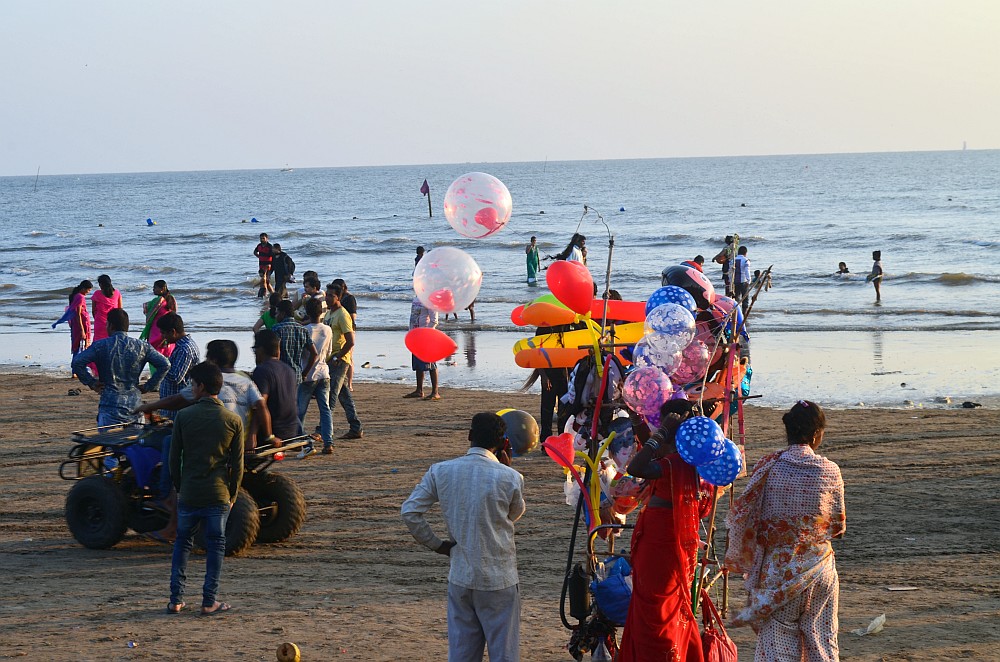
Adventure sports and cuisine
There are many adventure activities in Raigad that are quite popular among tourists and adventure seekers. One can experience Bungee jumping – the thrill of jumping from a height of 40 meters at Kolad, located around 110 kilometres from Mumbai and one of the many popular spots for adventure activities in Raigad.
Tourists can also try rappelling down the steep slopes of the Sahyadri mountains at various locations in Raigad, such as Kondana Caves, Tamhini Falls, etc. On the other hand, one can enjoy rafting on Kundalika river, which is one of the fastest flowing rivers in India.
One of the most popular activities in the hills of Raigad is trekking. One can explore the natural and historical wonders of Raigad by trekking to various forts, caves, waterfalls, etc. Some of the popular trekking destinations are Raigad Fort, Prabalgad Fort, Sagargad Fort, etc., all nestled in the beautiful Sahyadri Hills.
Raigad has a delicious cuisine that reflects its coastal and rural culture. It is famous for its seafood, such as fish, prawns, crabs, etc., that are cooked in various ways, such as curry, fry, masala, etc. The zone is also known for its vegetarian dishes, such as bhaji, pithla, vada, etc., that are made from local vegetables and spices.
Sweet items such as modak, puran poli, shrikhand, etc., that are made from rice flour, jaggery, coconut, etc., are also quite popular among tourists who often visit the zone to satisfy their taste buds.

